“The idea of wilderness needs no defense, it only needs defenders.” — Edward Abbey
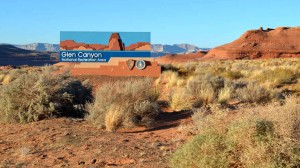 Winding along the curve of Hwy 89 descending down on approach to the Glen Canyon Recreation Area, that first glimpse of the dam is breathtaking. Majestic and powerful in its wide span of man made beauty and symmetry as the calm, peaceful lake bulges up against the massive strength of the concrete, now holding back the wild, natural river from carving its way through the canyon.
Winding along the curve of Hwy 89 descending down on approach to the Glen Canyon Recreation Area, that first glimpse of the dam is breathtaking. Majestic and powerful in its wide span of man made beauty and symmetry as the calm, peaceful lake bulges up against the massive strength of the concrete, now holding back the wild, natural river from carving its way through the canyon.
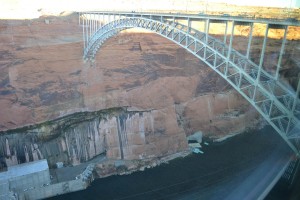 The graceful, gleaming steel arch of the Glen Canyon Bridge, spanning 750 feet above the Colorado River, buttressed against the canyon walls. It smacks of progress. Opportunity. An engineering marvel.
The graceful, gleaming steel arch of the Glen Canyon Bridge, spanning 750 feet above the Colorado River, buttressed against the canyon walls. It smacks of progress. Opportunity. An engineering marvel.
Looking out from the massive glass windows in the Carl Hayden Visitor’s Center, it is easy to understand how the concept of the Upper Colorado River Storage Project made sense on paper. It was proposed as not only a solution against flooding, but a method to store water for the Colorado River Valley, all while generating a steady source of hydroelectric power.
It created the second largest artificial lake in the country, attracting 2.5 million visitors per year, along with quite a healthy revenue stream from house boating, fishing, jet-skiing, all forms of fun and frolic in the clear blue, calm water.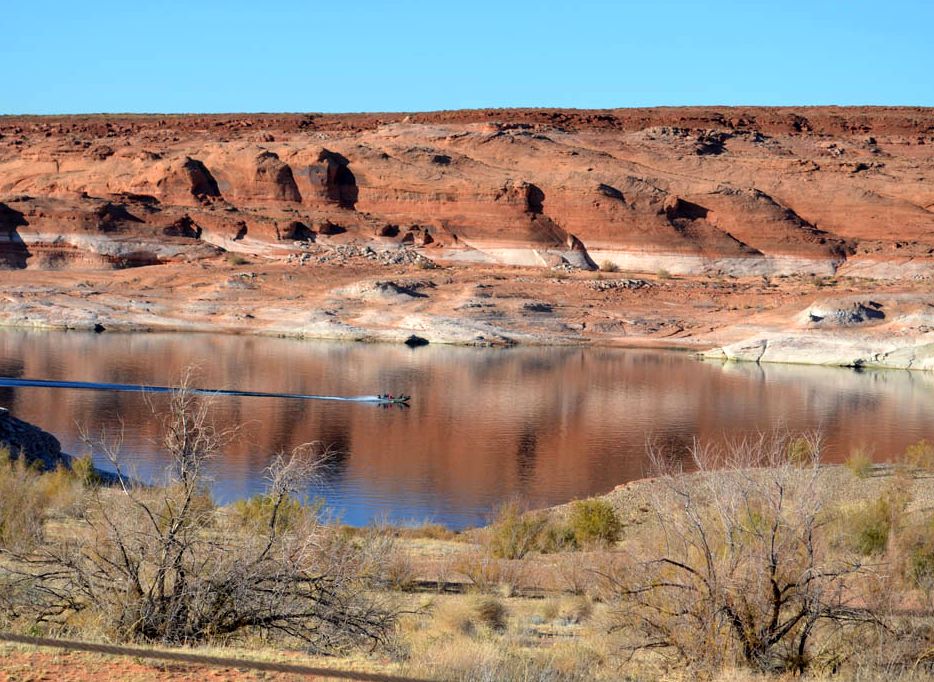
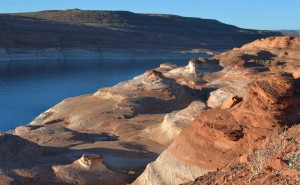 However, looking to the other side, the cathedral-like vermilion walls, centuries of carved sandstone, thinking about the spiritual significance that the Native Americans place on “Mother Earth,” revering their land, the environmentalist in me says “Nope. Wasn’t worth it!” Some 2,000 Anasazi Indian sites destroyed. The Navajo’s sacred Rainbow Bridge now overrun by multiple boatloads of tourists, a fate worse than the original fear of submersion due to flooding. I pondered the irony of Lake Powell being named after the Colorado River explorer, John Wesley Powell, his namesake being the very body of water behind the dam that “plugged” the river and submerged the beauttiful rugged canyon areas he had explored.
However, looking to the other side, the cathedral-like vermilion walls, centuries of carved sandstone, thinking about the spiritual significance that the Native Americans place on “Mother Earth,” revering their land, the environmentalist in me says “Nope. Wasn’t worth it!” Some 2,000 Anasazi Indian sites destroyed. The Navajo’s sacred Rainbow Bridge now overrun by multiple boatloads of tourists, a fate worse than the original fear of submersion due to flooding. I pondered the irony of Lake Powell being named after the Colorado River explorer, John Wesley Powell, his namesake being the very body of water behind the dam that “plugged” the river and submerged the beauttiful rugged canyon areas he had explored.
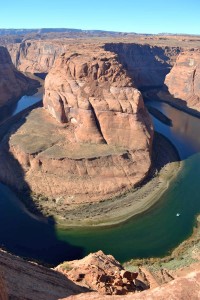 Overlooking the spectacular Horseshoe Bend, where the Colorado River has carved a graceful 270 degree curve of masterful sculpture makes one see that the curve of concrete sculpted by the engineers can’t come close to the marvel that is Mother Nature.
Overlooking the spectacular Horseshoe Bend, where the Colorado River has carved a graceful 270 degree curve of masterful sculpture makes one see that the curve of concrete sculpted by the engineers can’t come close to the marvel that is Mother Nature.
Sources say silty sediment deposits that used to flow naturally with the river are beginning to build up at the foot of the dam, threatening eventual blockage of the release outlets. Ecosystems were altered due to the change in water temperature, formerly warm and muddy (up to 85 degrees in summer) prior to damming, it is now cold and clear (consistent 45 degrees year round, killing off local fish species.) And there is some question as to the soundness of the structure, as the flow of water causes heavy cavitation – the explosive collapse of air bubbles in water moving at high speed – which can damage the concrete lining and erode the rock below. Also much less efficient than originally anticipated, the lake loses 6 -8% of volume due to evaporation and seepage in the surrounding porous geology. Often perceived as an environmental mistake, Edward Abbey called the Glen Canyon Dam “the most hated structure in the West.”
All I know is, here in this land where brilliant sun radiates from the sky, I can only hope I live to see a time when we utilize our natural resources more wisely.
On a side note, one has to wonder how much longer Horseshoe Bend will remain “unguarded?” While I was there, the ledge was overrun with throngs of daring tourists, laughing and cajoling each other closer and closer to the edge.
It’s not the heights that scare me….or the falling. It’s hitting the bottom. 😉

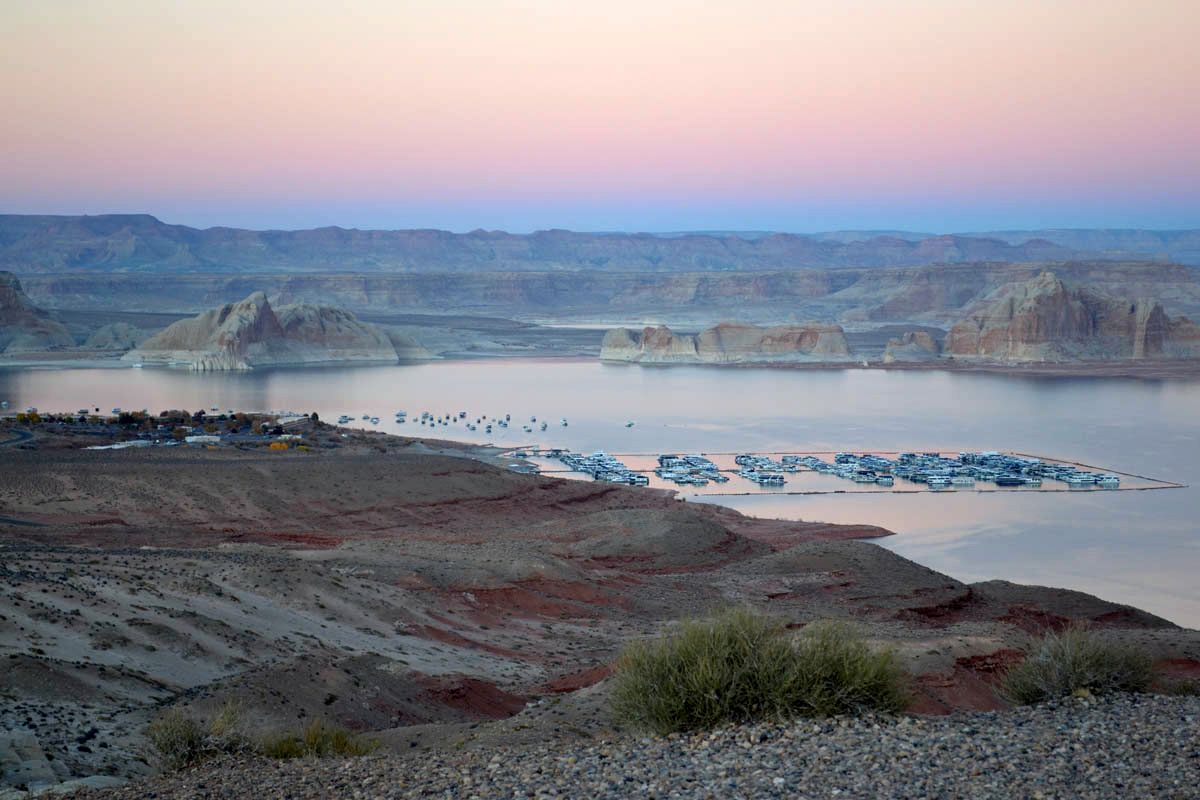

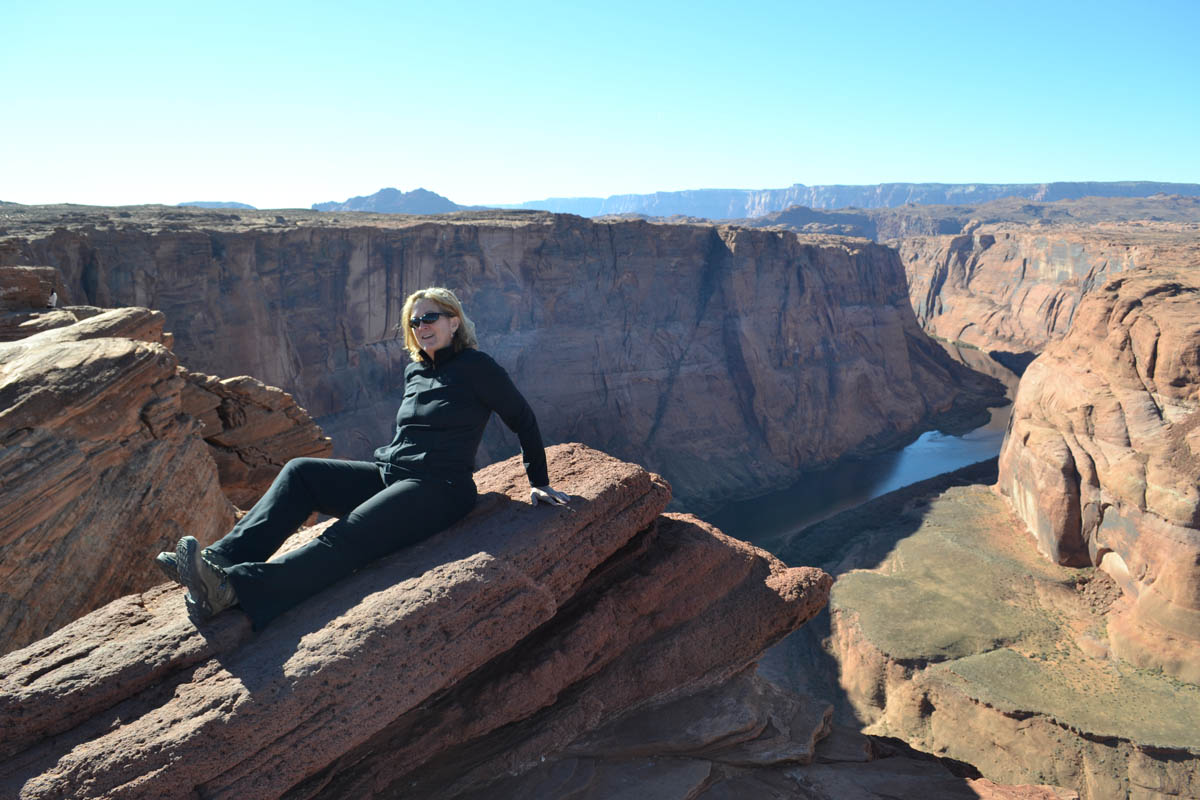
On the list of things this holiday we are thankful for, I am thankful a certain someone got a new camera 🙂 Breathtaking photos, my dear! Congratulations and keep having fun!